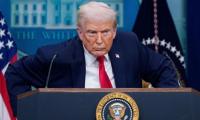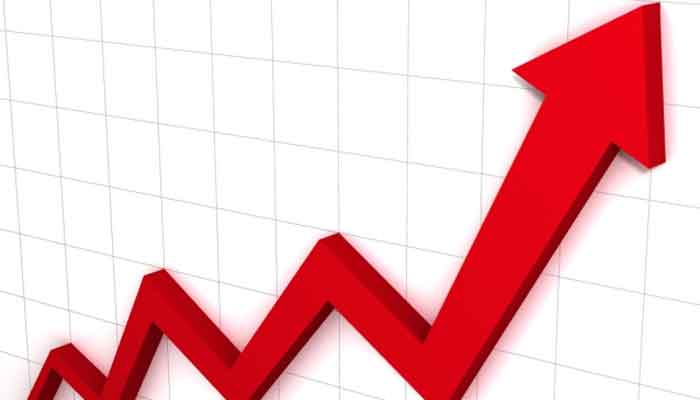A stabilising economy; Reversing the damage
Minister of State for Revenue, Hammad Azhar explains the efforts Pakistan Tehrik-e-Insaf government made to stabilise the dwindling economy.
Highlights
- This article by Revenue Minister Hammad Azhar broadly lays out the significant progress made in the first 200 days of PTI’s government.
- The dependence of revenues on imports needs to be curtailed in the long run and is an unhealthy sign for any economy, he maintained.
- The difficult decisions and measures that we go through today will indeed lead to a dramatic and qualitative change in the growth and development trajectory, the minister stated.
A little more than 200 days have passed since the PTI took over reins of the country in the midst of the worst economic crisis. It inherited multiple deficits that were allowed to surpass levels that are enough to run any economy to the ground. This article broadly lays out the significant progress on the economic stabilisation front in the first 200 days of PTI’s government and the direction that economic policy will take in the coming days.
A country like Pakistan needs an adequate level of foreign exchange reserves to finance its imports and repay/service its international debt obligations. The immediate challenge the new government faced when it took over in August 2018 was to overcome the huge external financing crises that the country faced as a result of the USD 19 BN Current Account deficit and the USD 10 BN debt repayment due this financial year. The degree of the crises can be gauged by the fact that the net reserves left at the State Bank were not even enough to cover its short term liabilities. On top of that, the forex reserves of the country were being depleted at an alarming rate of half a billion dollars per month on average since the last 20 months of PML-N government despite the net addition of USD 13 BN in external debt during the mentioned timeline.
This huge drain of forex was successfully plugged in time by arresting the rapid growth in imports from a positive of 15% to a negative figure and also by the SBP’s actions of bringing the currency in line with its market value so as to prevent the constant outflow of foreign exchange to support the artificially over valued exchange rate. Bilateral assistance in adequate amounts was also arranged from friendly countries like UAE, KSA, China. Foreign remittances that had remained stagnant since many years have also shown an unprecedented double digit growth.
As a result, and after a long period, the foreign exchange reserves went from the position of rapid depletion to that of a gradual build up starting from January 2019. Today, the foreign exchange reserves are at a higher level compared to the time we took over despite lower external debt accumulation from the previous year.
The Current Account Deficit in past 5 years had risen by seven times and the Trade Deficit of Pakistan had doubled thereby crippling the economy and exposing the superficial nature of economic growth of the past 2 years that was financed largely on the back of rising deficits. Both the Current Account and Trade Deficit have now shown sharp declines of 22% and 11% respectively from July till February 2019, and the improvement is accelerating. For example, in February alone, the Current Account Deficit decreased by 72% year on year.
On the fiscal side, tax revenues have shown a growth of 3% from last year but have fallen short of the targets set by FBR. This is not the first time that there is a shortfall in revenue collection. FBR has missed its collection targets in 8 of the last 10 years. This time though the primary reason for the shortfall can be traced to the sixth budget that was presented by the PML-N government just before the general elections. In the face of an unprecedented Rs2.3 trillion budget deficit and an already sizeable shortfall in revenue collection, the PML-N leadership decided to cave in to political considerations and presented a budget that wiped off major chunks from the country’s revenue streams. The country’s finances were put in jeopardy in a callous and failed attempt to win favour with the masses and secure an election. A similar ploy was employed in the power and gas sectors. These entities were knowingly thrown into financial crises in an attempt to create a false impression of low-priced energy thereby causing a huge build up in circular debt and large losses in gas companies. The losses of power and gas sector in the last year alone of PML-N government amount to more than Rs600 billion.
Parts of these losses were recouped by the Supplementary Finance Bill approved in October 2018. But by the time the new measures to offset the effects of the controversial PML-N budget were put in place, a sizeable loss in revenues had already incurred. Furthermore, the Supreme Court’s stay on the collection of taxes on prepaid mobile cards and reduction in indirect taxes on petroleum products also added to the revenue shortfall.
However, another critical factor has inevitably come into play. FBR collects 40% of its taxes at import stage and a large extent of growth in revenues in the preceding years was a result of growth in taxes collected at import stage (above 18% for last year). Now the overarching economic priority for us was to halt the drain on foreign exchange and the growth in imports had to be curtailed as a result. Especially those imports that are classified as non-essential or luxury goods but also attract the high duties and taxes. Thus the tax revenues had to take a hit on this count. Whilst devaluation of the currency allows some of the loss of revenues to be set off at import stage but latest data shows that the phenomenon of revenue growth riding on the back of import growth has come to an end this year. And this trade off was indeed a conscious policy decision since the need to preserve and secure precious foreign exchange was of utmost priority. The dependence of revenues on imports needs to be curtailed in the long run and is an unhealthy sign for any economy. The need to address supply side bottlenecks for industry like restoring competitiveness of local exporters and industry is also a key priority and on this count the government has reduced tariffs and taxes on hundreds of tariff lines that serve as inputs for our industry.
Nevertheless, the fiscal scheme of things has not been ignored and efforts are underway to make up for this shortfall in tax revenues by increasing the non-tax revenue receipts of the government for this year. If the efforts bear fruit then the Fiscal Deficit of this financial year will also register a sizeable decrease from last year. Furthermore, as the external sector continues to respond positively to the government measures, the second priority of the government i.e. fiscal stabilisation will begin to assume greater importance in the coming months and tax revenue considerations will attain primal importance in policy contours.
On the economic growth front, it’s important to understand the context and background. The period 2008-2018 was the lowest average economic growth period of the country since 1971 and it is not surprising. Whatever “above average” growth spurts we witnessed during this low growth period were short-lived because they were driven by consumption spending as opposed to private investment. These consumption driven growth periods, due to their non-productive nature, become associated with high external and internal deficits that force the country to undergo stabilisation measures i.e. tight monetary and fiscal policies. Economic stabilisation and rescuing the economy necessitates a temporary slowdown in economic growth of any country, especially when the prior growth periods are entirely deficit financed and consumption based. And that has been witnessed in Pakistan too as the economy is currently projected to grow at 4% this year as opposed to 5.2% of last year. This slowdown is not a contraction as many have incorrectly implied and it is also not permanent. And more importantly, what will be different this time is that the stabilisation period will run in tandem with structural reforms in order to lay the ground for a stronger, sustainable and investment based growth period in the aftermath.
On this count, the government has already moved to remove some of the structural bottlenecks that have hindered investments in the past. The Economic Reforms Package recently passed by Parliament contained multiple measures like removal of withholding taxes on filers for banking transactions, tax exemptions on import of machinery, setting up of green-field businesses, incentives to banks to advance loans to SMEs and agriculture etc. Similarly, a comprehensive restructuring and technology deployment plan for FBR has been finalised, a largest data integration exercise to date of FBR with other government agencies is already underway and a single portal for tax filing and payment is planned to be rolled out by July. A dedicated board comprised of private sector experts has started working under ‘Sarmaya Pakistan’ entity to restructure or identify SOE’s to be privatised. Power tariffs for export sectors have been reduced to levels that are at par with the regional average and the immediate clearance scheme for their pending refund claims with FBR has been rolled out.
Visa rules and fees have been relaxed for tourists and all ministries are working jointly to address the ease of doing business issues in the country. The above are examples of some of the initiatives that have already being undertaken and the above list is not exhaustive. Most of these measures carry a time lag before they start yielding dividends for the economy but a targeted and comprehensive reform process is certainly on track.
The Foreign Direct Investment (FDI) flows in the country have attracted some discussion recently. An impression is being given that somehow there has been a great decline in FDI under the new government. This is far from the truth as a closer look at the numbers reveals a very different picture. The FDI inflows resulting from CPEC activities have seen a tapering off because of the temporary gap between the first phase of CPEC being completed last year and the second phase focused on the western regions picking up.
The PM recently performed ground-breaking of the Gwadar’s airport and infrastructure development as a part of CPEC in this regards. To put things in correct perspective, excluding Chinese and CPEC inflows, FDI from the rest of the world has risen by more than 17% in the Aug-Feb 19 periods when compared with the same period of previous year. Furthermore, significant investments in the field of automobiles, agriculture, consumer goods and telecom from foreign investors are taking final shape.
Economic stabilisation is a painful corrective exercise in the short-term. Devaluation of the currency to bring it in line with its actual market equilibrium position adds inflationary pressures in the economy. The gas and power sector has needed urgent and much delayed tariff adjustments to save them from financial collapse. The government is fully cognizant of the impact that these measures along with a temporary slowdown in growth and rising inflation can have on the lowest income groups in society. Therefore, in parallel, the PTI government has unveiled an ambitious poverty alleviation programme called ‘Ehsaas’ consisting of two facets. It clubs together and syncs the pre-existing poverty alleviation initiatives of the federal government that were previously acting in isolation. Secondly, it introduces new interventions in order to encourage graduation from poverty as opposed to simply making the lowest income groups reliant indefinitely on cash handouts.
The first phase of the government’s housing project for the poor is to be announced shortly too. These flagship platforms will act as a foundational base towards creating a social safety net for the citizens of Pakistan.
Pakistan’s economy holds tremendous prospects. Pakistan offers all investors the right mix of demography, resilient society and many great wonders that our land and people offer. Stabilisation and structural reform is the need of the hour and the difficult decisions and measures that we go through today will indeed lead to a dramatic and qualitative change in the growth and development trajectory of Pakistan.
The author is the Minister of State for Revenue, Government of Pakistan.
-
 Rachel McAdams Becomes Object Of Jokes At Hollywood Star Of Fame Event
Rachel McAdams Becomes Object Of Jokes At Hollywood Star Of Fame Event -
 South Korea's Ex-PM Han Duck-soo Jailed For 23 Years Over Martial Law Crises
South Korea's Ex-PM Han Duck-soo Jailed For 23 Years Over Martial Law Crises -
 Global Markets On Edge Over Greenland Dispute: Is US Economic Leadership At Risk?
Global Markets On Edge Over Greenland Dispute: Is US Economic Leadership At Risk? -
 King, Queen Visit Deadly Train Crash Site
King, Queen Visit Deadly Train Crash Site -
 Oxford Research Warns ChatGPT Reflects Western Worldviews
Oxford Research Warns ChatGPT Reflects Western Worldviews -
 UK Inflation Unexpectedly Rises To 3.4% In December, The First Increase In Five Months
UK Inflation Unexpectedly Rises To 3.4% In December, The First Increase In Five Months -
 Meghan Markle Set To Take Big Decision On Returning To UK For Invictus Games
Meghan Markle Set To Take Big Decision On Returning To UK For Invictus Games -
 Prince Harry To Leave Britain One Day Earlier Than Expected For THIS Reason
Prince Harry To Leave Britain One Day Earlier Than Expected For THIS Reason -
 The Way You Consume Sugar Could Be Affecting Your Health
The Way You Consume Sugar Could Be Affecting Your Health -
 Brooklyn Beckham Gets Backing From Vanessa Marcil Amid Feud With Parents
Brooklyn Beckham Gets Backing From Vanessa Marcil Amid Feud With Parents -
 OpenAI Uses AI To Detect Under 18 Users On ChatGPT
OpenAI Uses AI To Detect Under 18 Users On ChatGPT -
 Philippines To Lift Ban On Grok AI After Musk's Platform Commits To Fix Safety Concerns
Philippines To Lift Ban On Grok AI After Musk's Platform Commits To Fix Safety Concerns -
 Trump Vows ‘no Going Back’ On Greenland Ahead Of Davos Visit
Trump Vows ‘no Going Back’ On Greenland Ahead Of Davos Visit -
 Alexander Skarsgard Breaks Silence On Rumors He Is Bisexual
Alexander Skarsgard Breaks Silence On Rumors He Is Bisexual -
 King Charles Faces Rift With Prince William Over Prince Harry’s Invictus Games
King Charles Faces Rift With Prince William Over Prince Harry’s Invictus Games -
 Elon Musk’s Critique On ChatGPT Safety Draws Sharp Response From Sam Altman
Elon Musk’s Critique On ChatGPT Safety Draws Sharp Response From Sam Altman




